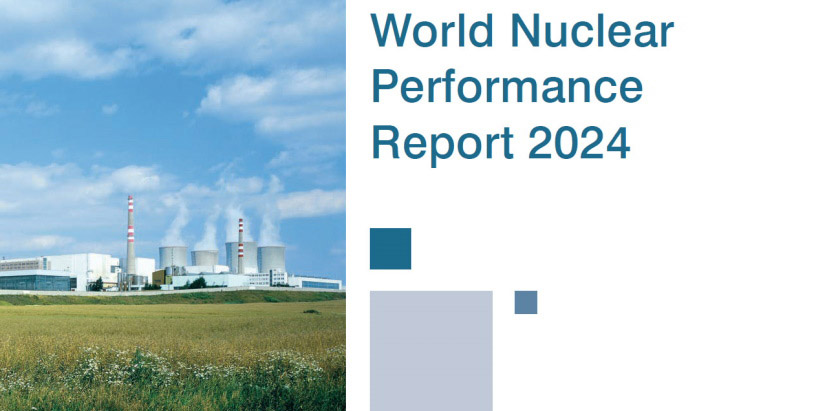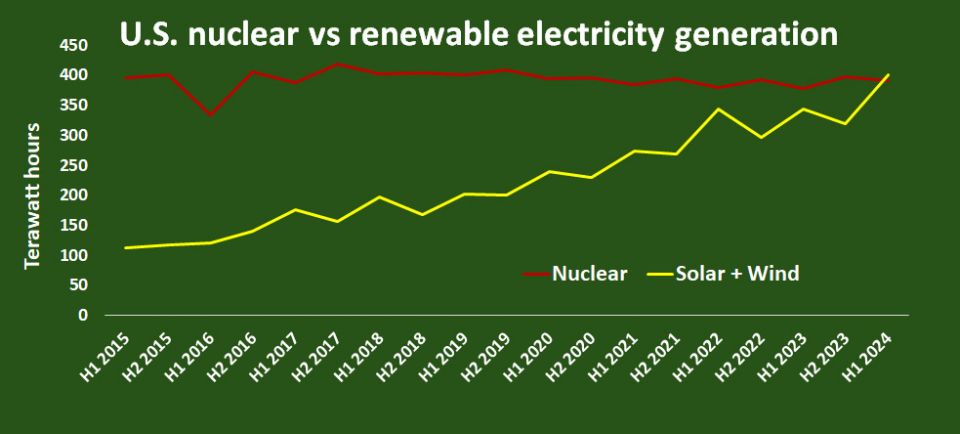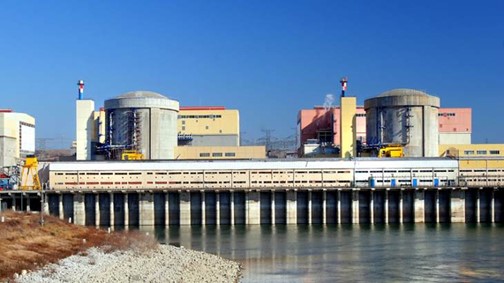The five reactors that shut down last year were matched by five new ones connecting to the grid.

Global nuclear electricity production (Image: World Nuclear Association) CLICK TO ENLARGE
Quotable: “The global nuclear reactor fleet has a proven track record of excellent performance. It is now time to build on that track record and significantly accelerate the pace of new nuclear construction,” Sama Bilbao y Leon, director general of the World Nuclear Association, concludes in the report.
“Today, there are 64 reactors under construction around the world, with many more planned and proposed in both new and established nuclear countries. The industry is set for a major expansion, and we can expect more governments and companies to sign the declaration to triple global nuclear energy capacity. Additionally, we anticipate increased collaboration with other industries,” she continued.
Mohamed Al Hammadi, WNA’s chair and managing director of Emirates Nuclear Energy Corporation, said, “With both nuclear energy generation and capacity factor rising in 2023, it is clear that nuclear energy is a proven, reliable, and substantial generator of clean electricity for 36 countries today. . . . Now, further optimizing the performance of reactors; extending the safe, reliable, and long-term operation of all units; as well as deploying new units are crucial steps in the reemergence of civil nuclear energy in the race to net-zero power.”
Highlights from the report:
Global nuclear electricity generation rose to 2,602 TWh in 2023, up from 2,544 TWh in 2022, providing 9 percent of the world’s electricity—second only to hydropower among clean-energy sources.
France, host of the 2024 Olympics summer games, was powered by over 60 percent nuclear electricity on average, thanks to the return to service of French reactors, which contributed an additional 42 TWh.
The global capacity factor reached 81.5 percent in 2023, up 1 percent from 2022, reflecting the consistent strong performance over the past 20 years. Reactor performance remains high regardless of age.
Nuclear reactors in 2023 helped avoid 2.1 billion metric tons of carbon dioxide emissions from equivalent coal generation.
Across 15 countries, there are 64 reactors currently under construction, with more than 20 entrant countries waiting in the wings, such as Ghana, Poland, and the Philippines. Two-thirds of the reactors being built are in Asia—with 30 in China alone.
A closer look: The 2023 report noted growing policy support for nuclear, with increased momentum seen again in this latest report.
“Governments are increasingly creating supportive policy environments to advance nuclear development for both small and large plants with a range of applications,” Bilboa y Leon said. “Nuclear technologies will have a broader role than traditional grid electricity supply. There is increasing interest from end energy users such as data centers, which have high electricity requirements, and industrial producers that require heat for chemical and material production applications or desalination. This offers the potential to decarbonize the wider economy, especially hard-to-abate sectors.”









